Here’s Who Won Milan Fashion Week
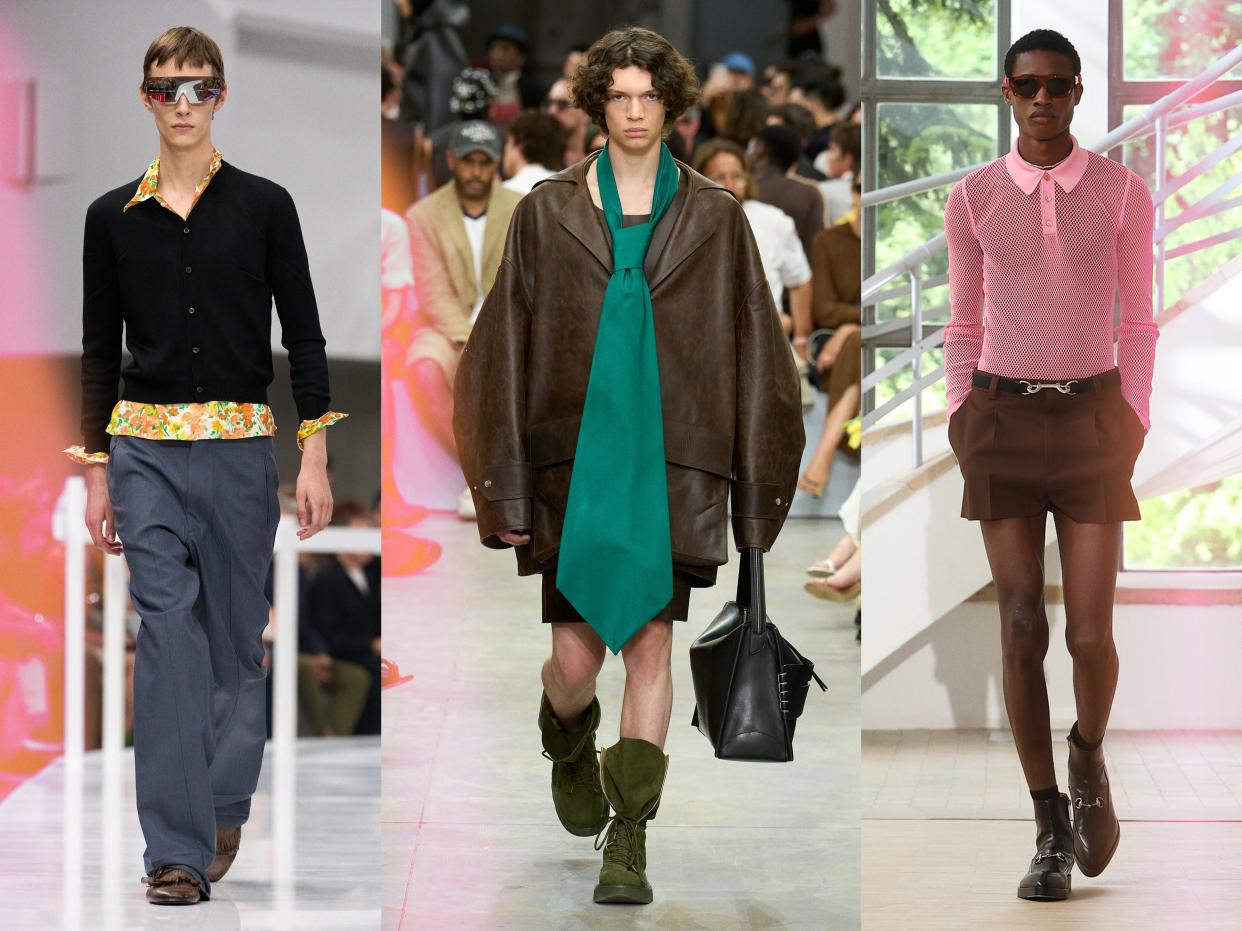
- Oops!Something went wrong.Please try again later.
- Oops!Something went wrong.Please try again later.
This is an edition of the newsletter Show Notes, in which Samuel Hine reports from the front row of the global fashion week circuit. Sign up here to get it in your inbox.
On Monday morning, Milan Fashion Week woke up to the first and practically only big surprise of the season so far: Alessandro Michele’s first looks for Valentino, revealed in a pre-collection lookbook that by all accounts was quickly arranged in the days prior. Finally, some drama! You’ll remember that in late 2022, Michele was drummed out of Gucci, the house where he initiated menswear’s genderless revolution with pussy bow blouses and silky suiting. And here he was, seizing the attention just hours before current Gucci creative director Sabato De Sarno staged his sophomore men’s runway show. The timing could not have been coincidental, and it raised the juicy prospect of an Italian fashion version of the Drake-versus-Kendrick rap beef, playing out not in diss tracks but across dueling collections vying for the future of your closet.
De Sarno, who wiped away the fanciful Michele era by declaring a return to an “everyday” wardrobe when he joined Gucci last year, responded with an Instagram caption that appeared to allude to his scene-stealing predecessor. “Grazie a chi c’era già prima di me, grazie a chi è arrivato con me. Lo stiamo facendo insieme,” he wrote. Thanks to those who came before me, thanks to those who came with me. We are doing it together. Which may well diffuse any simmering tension between the two designers who effectively traded houses (before his Gucci appointment, De Sarno was the Valentino second-in-command).
A few hours later, when a crowd including Paul Mescal and Kering boss François-Henri Pinault took their seats at the Triennale art museum, De Sarno’s rejoinder played out on the runway. Following his measured debut in January, De Sarno has been under pressure to prove that his straightforward, street-ready tailored overcoats, horsebit creepers, and bedazzled sailor knits can create as much desire as Michele’s artful worldbuilding once did. Critics have been skeptical, but De Sarno has soldiered forward, confident that he will wow customers with a sophisticated offering of sensual daywear.
Well before a model wearing little more than a pair of maroon leather boxers strode confidently through the museum, it was clear that no amount of drama would stop De Sarno from going full steam ahead. According to a release circulated before the show, the collection “speaks of encounters between the city and the beach.” (According to Gucci, De Sarno was inspired by William Finnegan’s coming-of-age surf memoir Barbarian Days, which happens to be my number-one summer beach read recommendation.) If De Sarno’s debut collection—which I really liked—struck some as too modest and safe, this time around there was plenty of flash.
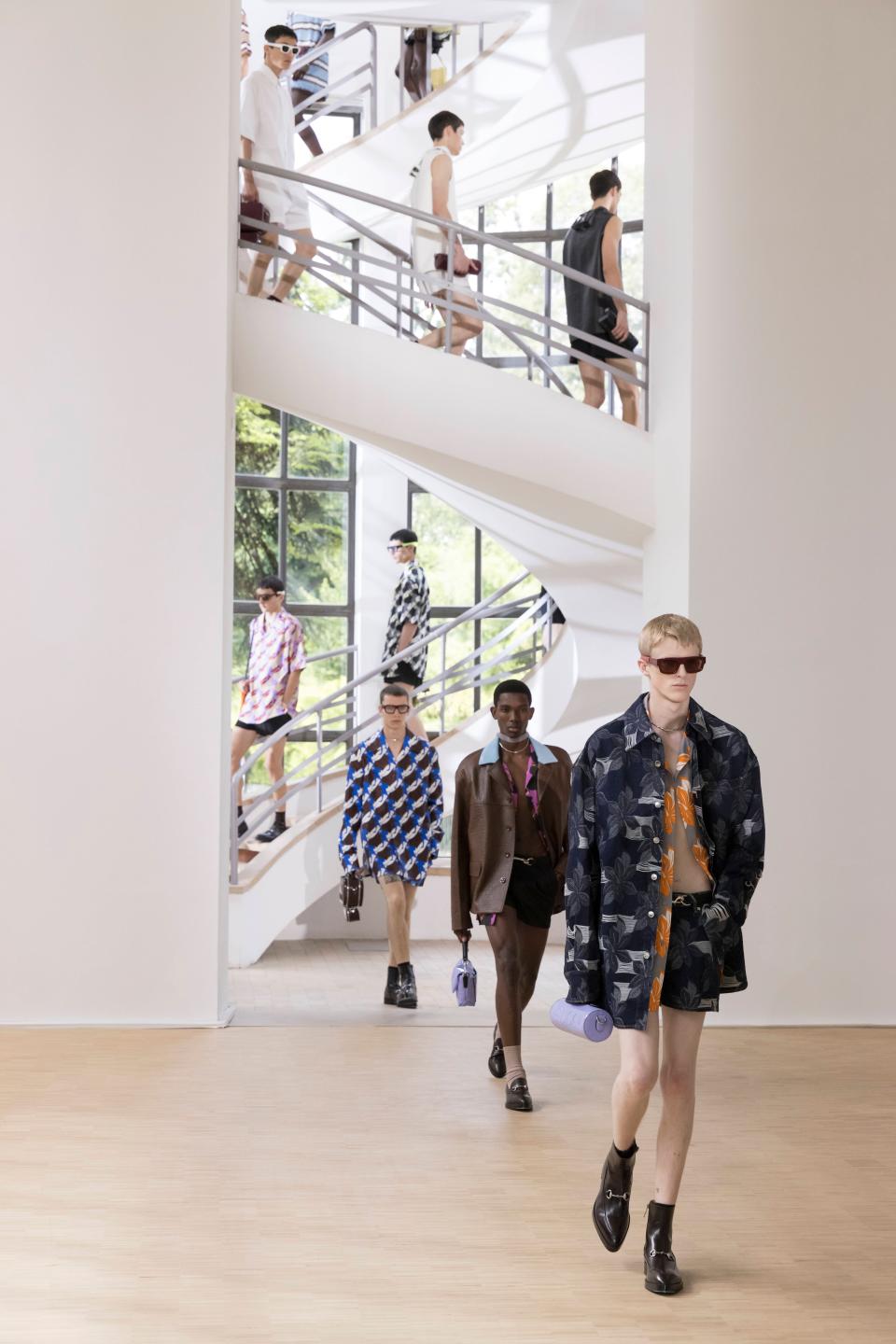
Flashes of skin, thanks to dozens of short-shorts that were somehow skimpier than the tailored boxers Mescal wore in his front row seat. Flashes of color, and lots of it, splashed across bright meshy polos, oversized eye-catching Aloha-print shirts (at least one of which appeared to be completely and painstakingly beaded), more polos layered with flouncy fringe, overcoats cut out of Brat-green leather, and Gucci-branded sunglass croakies that accented the models’ necks in place of scarves or ties. Flashes of brio, in the high-tempo Kills and Bowie soundtrack.
Were there flashes of brilliance? The colorful leather chore coats and patterned shirts are grabby and fun, the kinds of statement runway looks that many brands are too timid to actually produce in meaningful quantities. De Sarno’s plan has always been to sell pretty much exactly what he shows. There are a lot of opinions about De Sarno’s menswear, but so far basically none of it has hit stores yet, so his ultimate success is still TBD.
The winner of this round of minor fashion beef? All of us in the traveling press corps, who were given much to talk about on the sweltering final day of Milan Fashion Week men’s. And Paul Mescal, who has plenty of new short-shorts to choose from.
There were plenty of highlights from this Milan menswear season, even if bold new ideas were hard to come by at times. Milan is really like two different fashion weeks squeezed together into three-and-half days where you’re blasted with a firehose of clothing from your first caffè to your final spritz. The first half of MFW belongs to the brands that don’t change all that much season to season—the menswear mainstays that consistently refine classic codes rather than introduce radical new ones, where seasonal progression might be the introduction of a new shade of peach or a slack widened by a few centimeters.
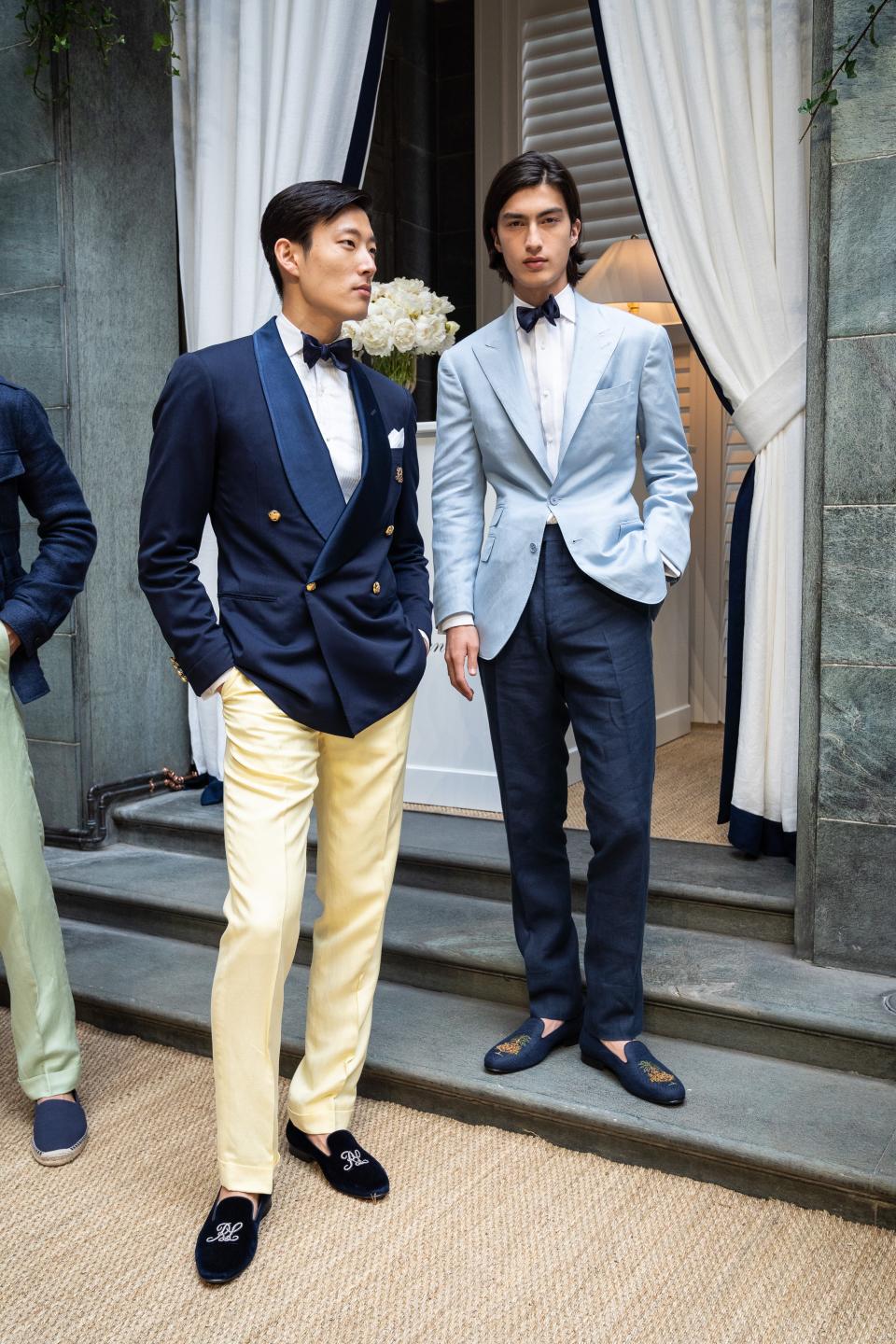
Still, not so long ago classic menswear was in crisis, buffeted by winds of change. But this season menswear ran Milan. At Ralph Lauren, which staged its traditional men’s presentation in the brand’s stately Milanese showroom, a country club’s worth of models sported the latest in coastal elegance, like a double-breasted shawl collar dinner jacket with gold buttons worn with buttery yellow gabardine trousers. Eveningwear and fine tailoring are doing gangbusters for RL right now, so the brand is giving their customers what they want. Specifically, their winning formula is to lean into the iconic style of the actual Ralph Lauren, whose singular rule-breaking swagger has a casual younger generation dreaming of wearing jeans and Salomons with 6x2 double-breasted blazers. The shawl collar look, for example, is based on one of Lauren’s fits.
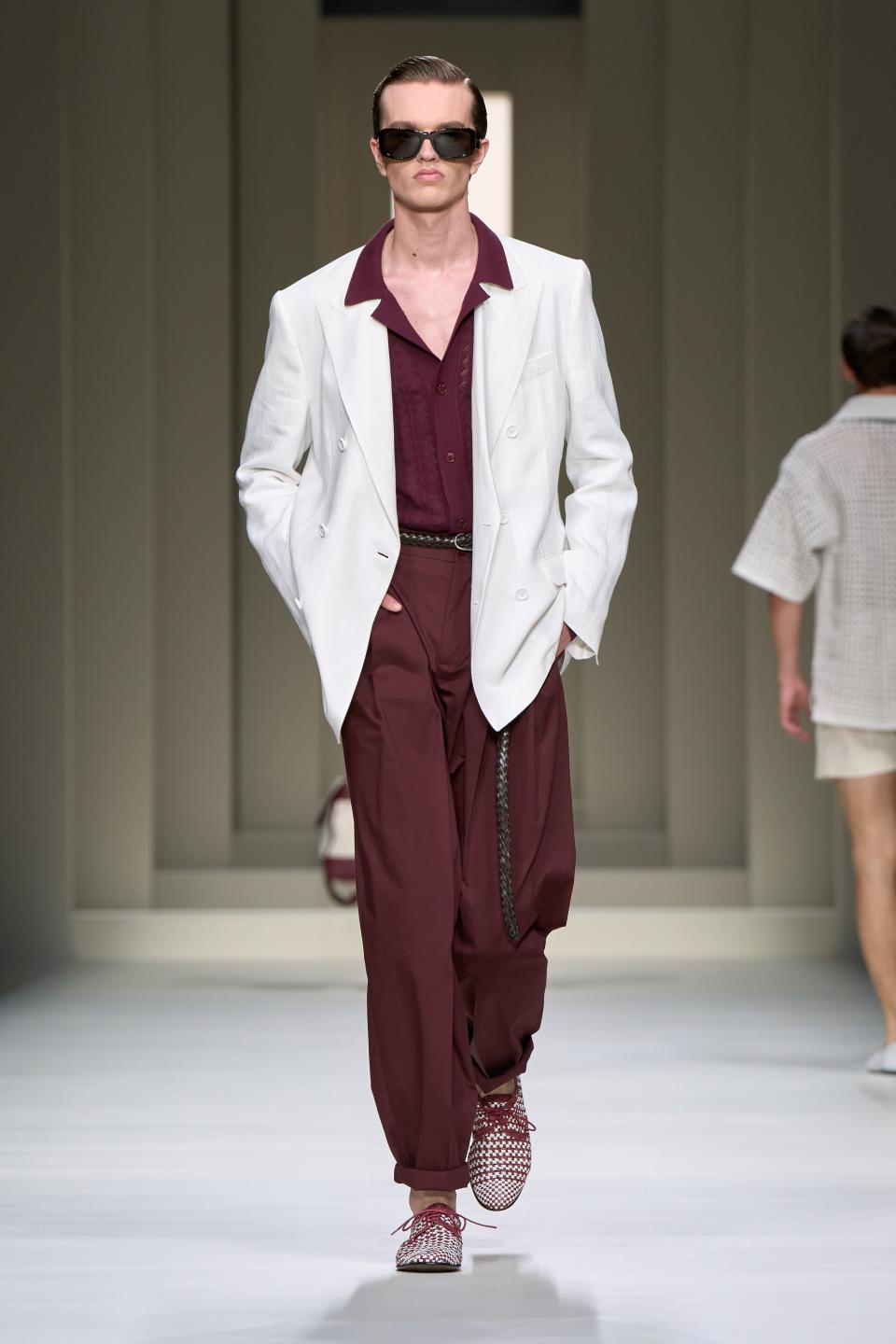
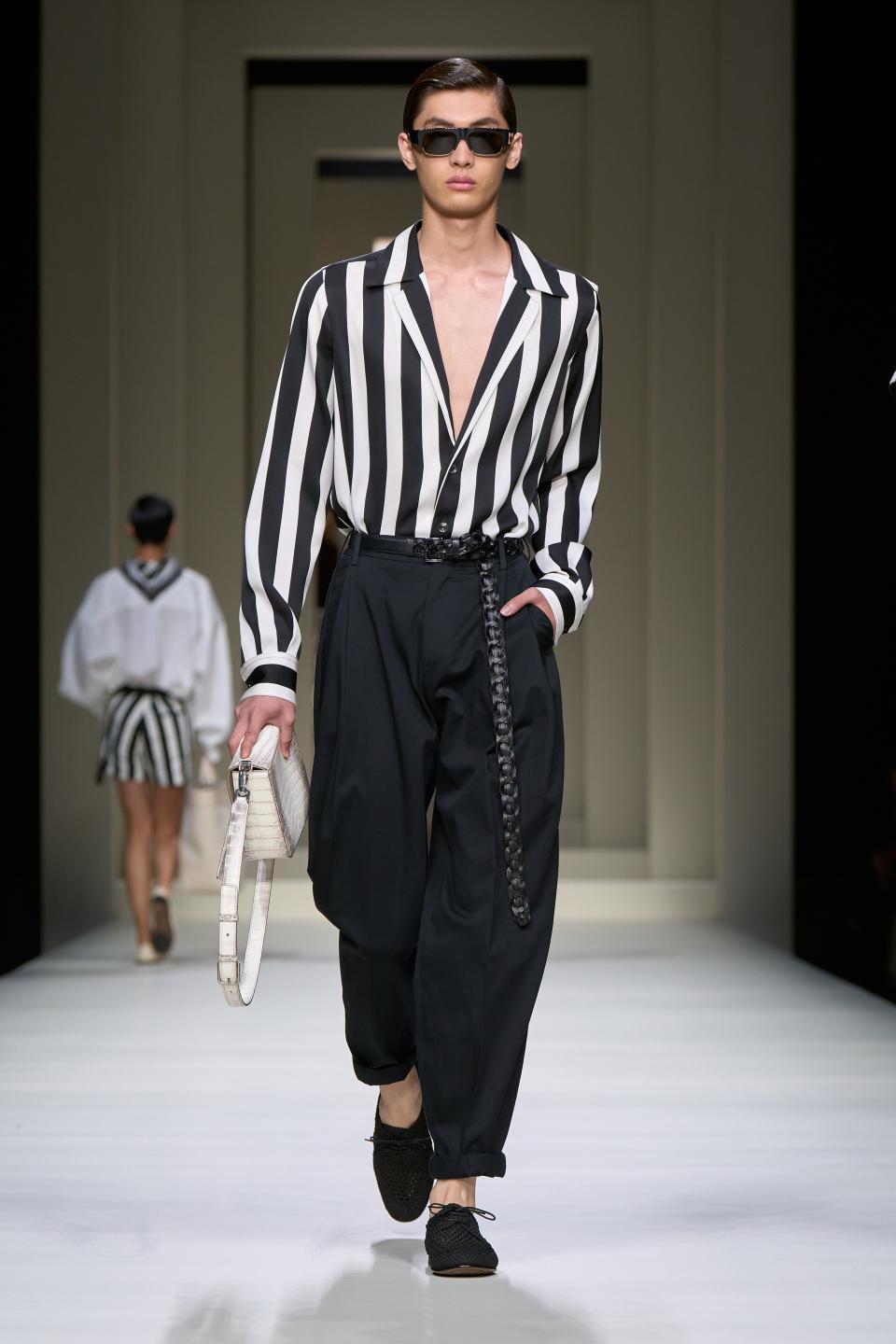
Then there is Dolce & Gabbana, which has taken a similar tack on the runway recently, abandoning its adventures in a world it doesn’t know much about (streetwear) to take a long, satisfying tour through a world it very much does (Italy). The show, aptly titled “Italian Beauty,” continued the duo’s return to their artisanal roots with a rich parade of handmade raffia derbies, optic-white blazers worn with contrasting trousers in rustic hues, and more sailor shirts than you could fit in a fleet of Rimowa trunks—an ode to the very current craze for Talented Mr. Ripley-esque Italian holiday style. From Dolce to Dunhill, newly run by natty Englishman Simon Holloway, from Brunello Cucinelli to Fear of God, the order of the day was not rebellion but rather radical classicism.
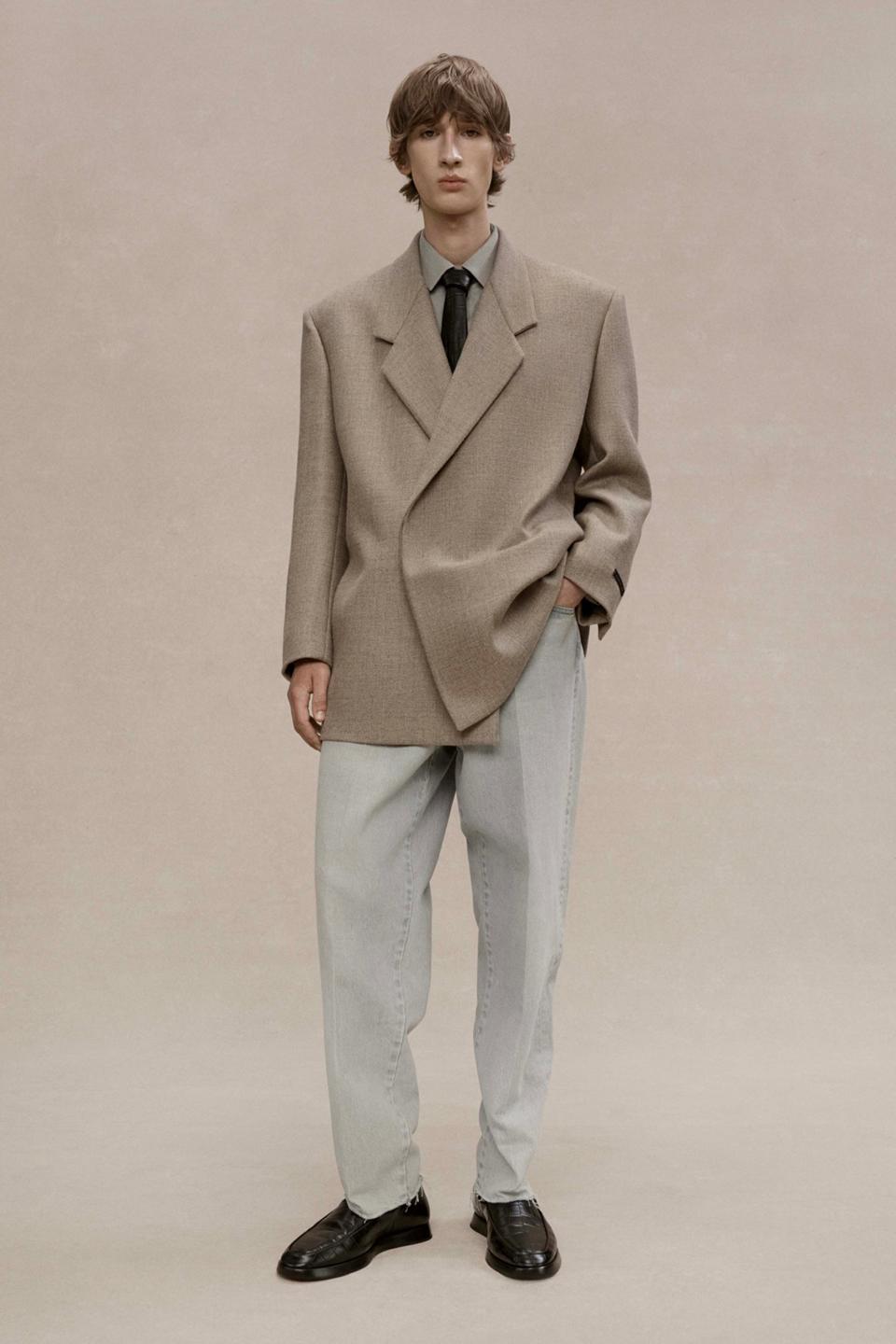
Wait a second, Fear of God? Yes, in the brand’s showroom set up in a deconsecrated cathedral with peeling frescoes on the walls (very FOG), Jerry Lorenzo showed me his brave new idea for the season: the necktie. Yes—in a first, Lorenzo finally made a bunch of ties, which he’d resisted for years as he built a clothing empire basically for people who don’t wear ties. “I feel like today we're in an era where everyone kind of tries to look like they're not working,” he said. Spoken like a true practitioner of radical classicism.
By Saturday, it was time for a relay team of weirdos to take the baton. The second half of Milan Fashion Week is the one where futurists and misfits twist the codes of menswear to propose totally original ways to get dressed every day. “Finally,” huffed one fashion editor as we sat down in plastic lawn chairs in an abandoned parking garage for the Magliano show. At fashion week, there is such a thing as too much perfection. The grind of criss-crossing the city every hour can feel like a lot of hullabaloo when you’re not getting your Gammarelli socks knocked off.
Luca Magliano and Martine Rose shook us out of our torpor. Magliano, the anointed indie star of the Milan fashion scene, jumbles clothes together in strange and almost sensual combinations. If Giorgio Armani defines the aesthetic of Boomer and Gen X Italy, Magliano speaks for the shambolic and inventive styling natural to Gen Z, working fine tailoring fabrics into belted skirts and pleated trousers that fit like track pants, coupled with shirts (ranging from the color of mud to hot pink) that look like they were found god-knows-where, and grandma sweaters made with Cormio, if your grandma wore a knit that had a coiled snake smoking a cigarette on it. Magliano calls his thing not menswear or womenswear but “this kind of in-the-middle-wear, which is where I am super happy and where I find more satisfaction.”
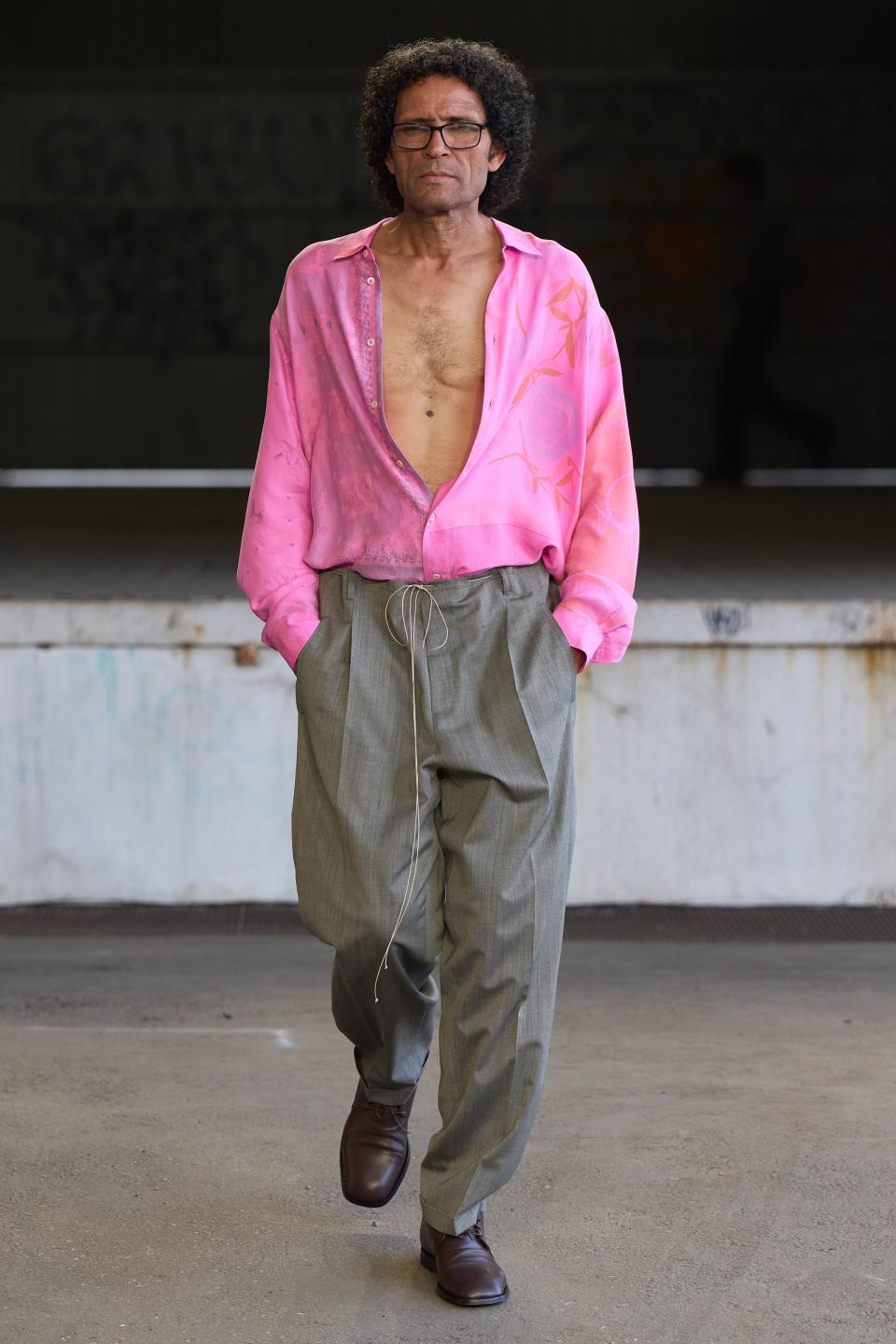
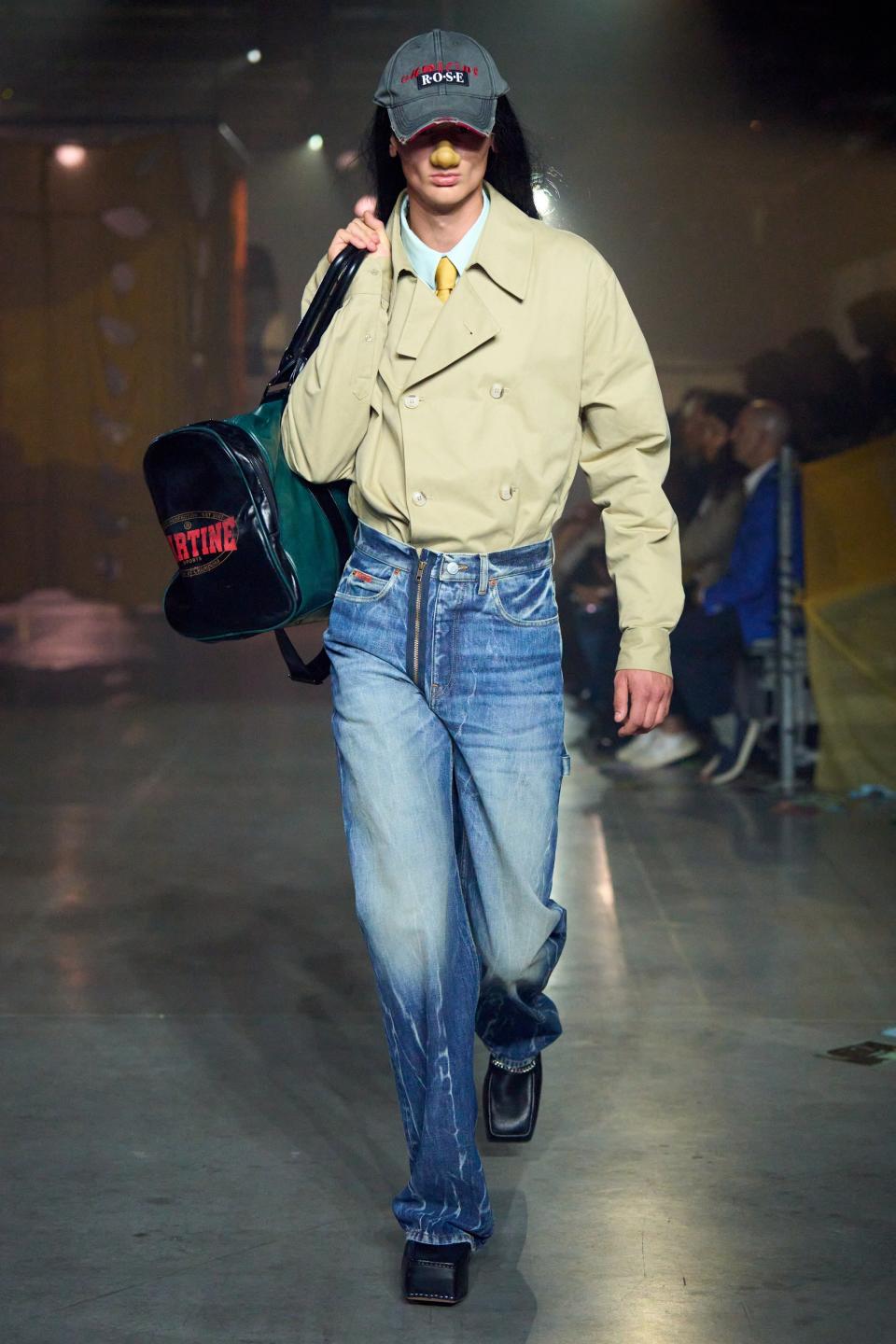
London fashion’s finest Martine Rose takes a slightly bawdier approach to sex; her clothes appear designed to be removed, with jerseys cut muscle-tight and zippers placed invitingly across the pelvis of leather pants. In a preview she told me she wanted to “bring another sort of beauty, something that feels really undone” to Milan for her debut show in the city. Her models wore unsettling prosthetic noses and wigs that cascaded down their backs almost to their square-toed loafers, and they vamped around the dark room—filled with abstract structures wrapped in part with bootleg Martine Rose tees—at Olympic race-walking pace. Which made it tricky for me to see the clothes, like a rather novel soft trench coat-top, stuffed into jeans as if a businessman had to make a quick exit from a sticky situation. Which was a shame, because it’s no small feat to make workaday London style look so scintillating.
At Prada, escapism was the order of the day. Or was it? “I think that maybe we are all a little bit in need in our minds for escapism,” said co-creative director Raf Simons backstage. “Me? No,” retorted Miuccia Prada. “I don’t want to escape. Eventually, I propose something positive, but escapism I don’t like in general. I think you shouldn’t escape from reality, from what happens in the world.”
As I wrote in January, Prada’s enigmatic work is guided by the often contradictory instincts of its two designers. And this season, in the face of our pessimistic times, they pursued “something that would express youthful optimism,” said Prada. “Think how the fresh mind of youth sometimes thinks about what they like,” added Simons. “Sometimes when you get older, you start to overthink a lot, and you limit yourself. When you are young, you just go, and we like that spirit.”
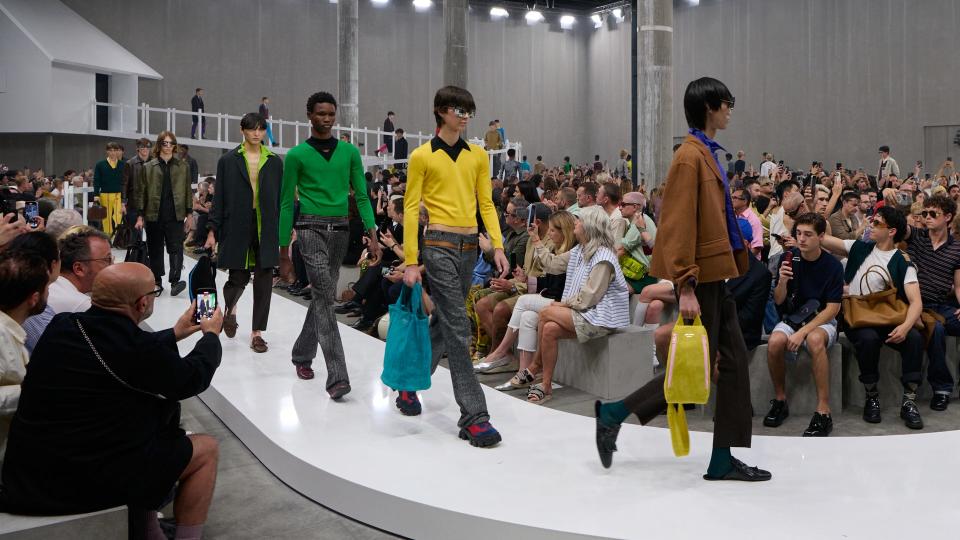
We had just seen a collection seemingly shaped by this very process. The Fondazione Prada set was a small white “hut” on stilts connected to a long, winding runway, the kind of thing you might imagine in a hazily constructed memory. And in a weird way, the clothes felt like a Prada collection you might imagine if you were trying to remember what a Prada collection looks like. There were Prada’s hallmark tiny sweaters, and trousers that sit low on the hips and long through the ankle, but things got blurry from there. What looked like heavy wool trousers were actually made of cotton and printed with trompe-loeil patterns, affixed with make-believe belts. Shirts appeared frozen in motion thanks to internal wire, and colorful layered sweaters were in fact one single knit. Trench coats and military jackets were cut many sizes too small in the sleeves, as if they were “from mom, from dad, from grandmother, from grandfather, maybe things from your memories,” Simons said.
The abrupt outerwear looked immediately wearable, among many other pieces from a collection full of intrigue, one that invited you to reconsider first impressions. The designer mirrored the irrationality of the world through deceptive clothing that can’t easily be explained, even by its own creators. Said Mrs. Prada of the way they work: “I like this, I like this. And we just put things together in a very simplistic, very naive way,”
But the real winner of Milan Fashion Week in my book was Jonathan Anderson, whose incredible JW Anderson collection ping-ponged between the absurdly imaginative and the transfixingly wearable. The best JWA collections feel like windows into the designer’s brain, where he catches fragments of ideas and then explores them to their fullest conceptual potential. Backstage, he said he had been trying hypnotherapy sleep apps for the past six months, one of which taught him the term “real sleep.” “I was wondering what that meant, really?” he said. “Today, do we actually sleep at all?”
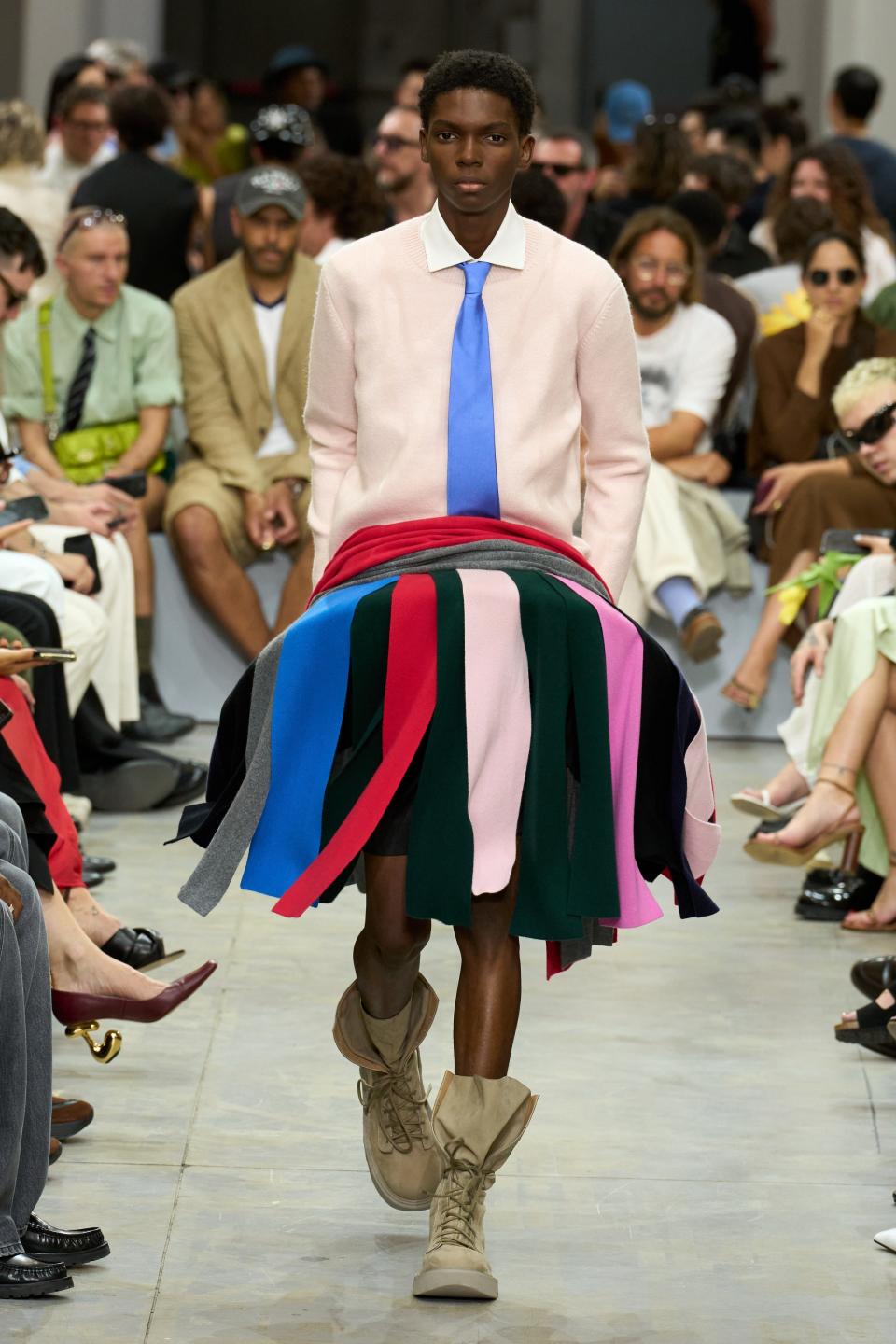
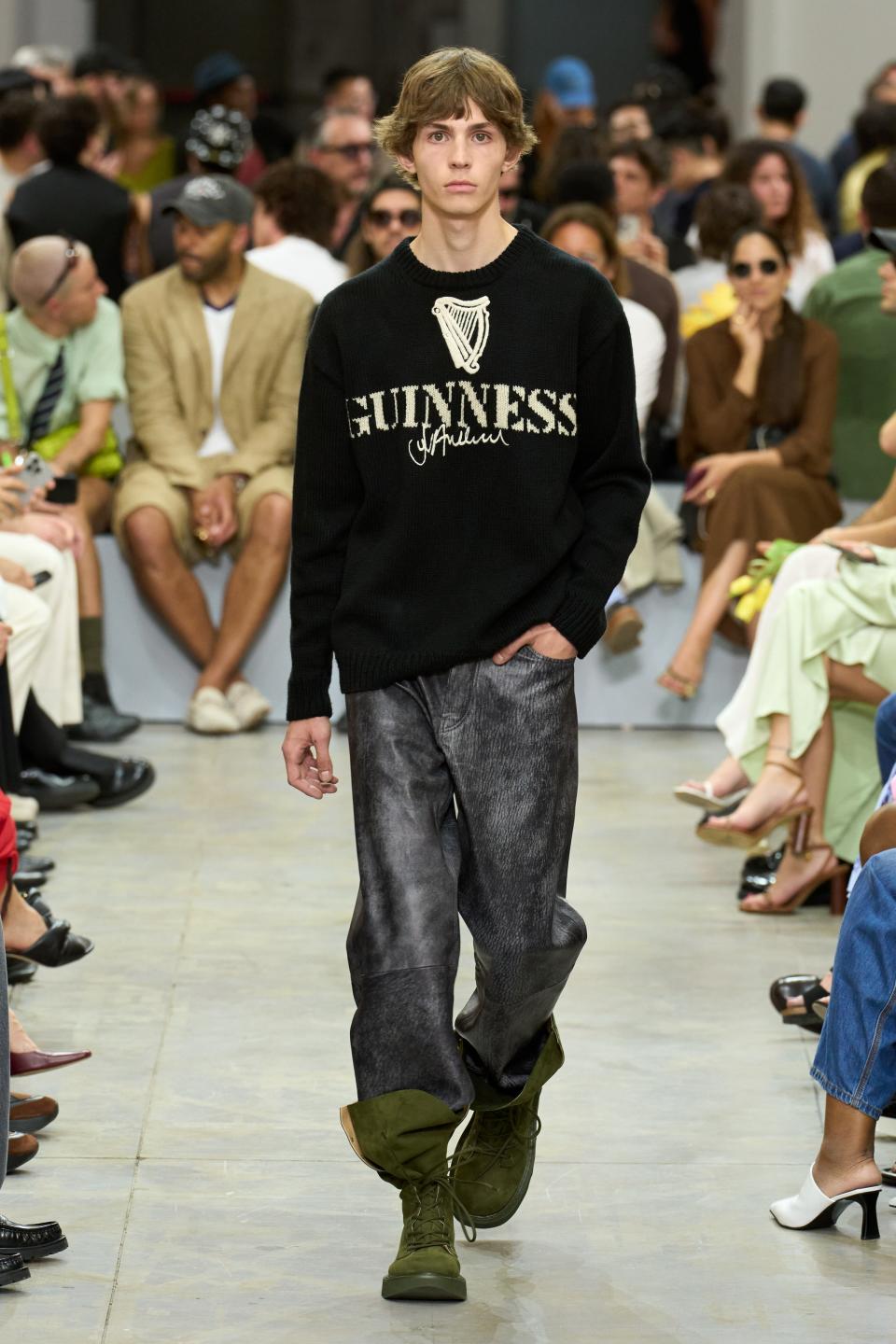
A night owl, Anderson’s fantasy of a good night’s sleep looks like pillowy duvet coats, knit pajama tops, and v-neck sweaters with the lacey necklines of fine nighties. Instead of counting sheep, Anderson was perhaps counting trios of cocoon-like leather coats and enormous knit bomber jackets. Anderson sounded more determined than ever to push his shapes to absurd proportions: “I went to a music festival recently, and I saw people dressing more in high fashion than actually is happening in fashion,” he said. His mind wandered from there. Georgian country cottages became hand-knit cardi-jackets; the abstract notion of scale became a hilariously huge green tie; strips of cashmere fabric adorned protruding structures that hung from the waist. Finally, he thought back to the nightcap that sent him spinning to bed: Guinness! The audience couldn’t help but grin at the three beer-branded knits that brought the show home.
In tradition-bound Milan, this fast-paced mirror of Anderson’s imaginative creative psyche was extra gratifying, exactly the kind of lighthearted drama Milan Fashion Week needed.
Originally Appeared on GQ

